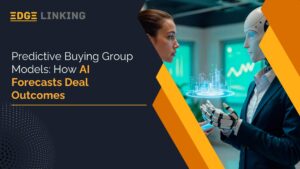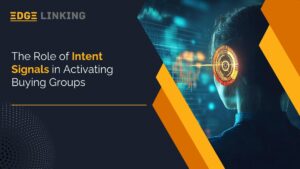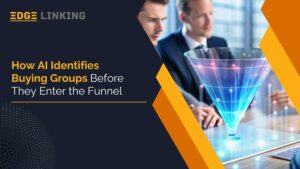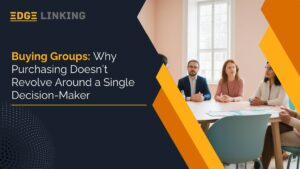Your marketing team just wrapped up a big campaign. The landing page saw thousands of visits, the whitepaper was downloaded multiple times, and your CRM is now packed with “leads.” But when sales pick up the phone, it is nothing but disappointment. They only hear, “I don’t recall anything” or “I am not the right person to decide”.
Demand generation is the riskiest of investments if operated in silos. Marketing generates a high volume of leads, but sales struggle with the quality of those leads. Both struggle with misaligned messaging, conflicting definitions of qualified leads, and inconsistent data flow. The result? Wasted budget, missed opportunities, and rivalry on both sides. A full-funnel demand engine enables marketing to generate leads at the top, nurture engagement in the middle, and support conversion at the bottom while handing off leads with context. Meanwhile, sales teams gain visibility into the lead journey, enabling their outreach to be more effective.
This article will explore how a full-funnel demand engine works, and why it’s essential to close the loop with sales.
The Sales-Marketing Disconnect: Why the Loop Breaks
Here’s how the disconnect between marketing and sales.
1.Mismatched Definitions of a “Qualified Lead”
Marketing might label a lead as “qualified” based on the number of content downloads or email opens.
Sales, however, look for budget, authority, need, and timeline (BANT).
Example: A SaaS company sends 500 whitepaper downloaders to the sales team. Only 50 meet the sales team’s Ideal Customer Profile (ICP).
Result: Lost trust in lead quality and wasted sales efforts.
2.No Visibility into the Buyer’s Journey
Marketing has insights into what content a lead consumed and which emails they opened, but they don’t always pass this information to sales.
Due to lack of context, the outreach is disconnected.
Example: A cybersecurity firm’s rep calls a lead without knowing they already downloaded three TOFU assets and attended a demo.
Result: Leads go cold due to irrelevant conversations.
3.Disconnected Tech Stacks
CRM, MAP (Marketing Automation Platform), and sales tools often fail to align with each other.
This results in broken workflows, lead leakage, or duplicated efforts.
Example: An enterprise HRTech provider’s CRM doesn’t sync with its email marketing tool, resulting in delayed or missed follow-ups.
Result: Slow response time and poor conversion rates.
4.Siloed KPIs and Success Metrics
Marketing celebrates lead volume, while sales are focused on revenue.
Without shared goals, collaboration is limited.
Example: A fintech team meets MQL targets, but deals fail to move forward, revealing a gap in alignment between demand generation and actual sales potential.
Result: Misaligned efforts that don’t drive pipeline growth.
How a Full-Funnel Demand Engine Closes the Loop
Here’s how a full-funnel demand engine helps close the loop with sales.
1.Unified Data Across the Funnel
A full-funnel demand engine integrates data from ads, emails, landing pages, webinars, CRM systems, and sales outreach into a single ecosystem.
This allows both marketing and sales to view a prospect’s journey.
Example: A SaaS company utilizes a unified dashboard to track the progression of a lead from a LinkedIn ad click to a demo request to a closed deal.
Impact: Shared visibility leads to better handoffs and more personalized follow-ups.
2.Intent-Based Lead Qualification
Modern demand generation strategies utilize intent signals, such as web visits, content downloads, and time spent on pricing pages, to score leads.
Example: An enterprise cloud platform integrates intent data from third-party sources to prioritize leads already researching similar solutions.
Impact: Sales focuses on leads with genuine buying intent, boosting conversion rates.
3.Aligned Definitions of MQL, SAL, and SQL
A full-funnel approach ensures that both teams agree on what constitutes a Marketing Qualified Lead (MQL), a Sales Accepted Lead (SAL), and a Sales Qualified Lead (SQL).
Example: A fintech firm holds monthly alignment meetings where marketing and sales refine lead scoring rules based on close rate data.
Impact: Fewer junk leads passed to sales, and better pipeline efficiency.
4.Seamless Lead Handoffs with Context
When a lead moves from marketing to sales, the handoff includes context: the content they consumed, the campaigns they came from, and the actions they took.
Example: A HRTech platform uses HubSpot and Salesforce integration to send detailed activity logs with every lead to the SDR team.
Impact: Sales can tailor outreach, increasing chances of engagement.
5.Closed-Loop Reporting for Continuous Improvement
The engine tracks lead from first touch to revenue, providing insights into which channels, content, and campaigns drive the highest ROI.
Example: A cybersecurity vendor maps closed-won deals back to early-stage blog content and paid campaigns to optimize their marketing strategy.
Impact: Marketing investments become based on what converts.
Benefits of Closing the Loop Between Marketing and Sales
Here are the key benefits of closing the loop through a complete funnel demand engine.
1.Quality Leads That Convert
With shared definitions of what constitutes a qualified lead, marketing can tailor campaigns to attract the right prospects.
Example: A SaaS company uses lead scoring based on engagement behavior (e.g., pricing page visits + webinar attendance).
Impact: Less wasted effort on unfit leads, and more focus on prospects with buying intent.
2.Shorter Sales Cycles
When sales receive leads that are already nurtured and educated by marketing, deals close faster.
Example: A cloud infrastructure provider notices that leads those who engage with mid-funnel content (such as case studies and product comparisons) to close faster than those reached through cold outreach.
Impact: Accelerated revenue and efficient use of sales resources.
3.ROI-Driven Marketing
Closed-loop reporting shows which campaigns and channels drive pipelines.
Example: A cybersecurity firm tracks closed-won opportunities back to specific webinars and paid ad campaigns, reallocating budget to top-performing sources.
Impact: Marketing spends smarter, with data-driven decisions that directly tie to revenue outcomes.
4.Better Customer Experience Across the Funnel
Prospects receive consistent messaging and timely outreach that aligns with their stage in the buyer’s journey.
Example: An HR software vendor uses integrated tools to ensure that leads who download an ROI calculator receive a follow-up from a sales rep.
Impact: Higher engagement and trust with prospects.
5.Increased Revenue Predictability
When marketing and sales work from a unified demand generation engine, pipeline forecasting becomes accurate.
Example: An AI startup ties MQL from trends to pipeline coverage and forecasts quarterly revenue.
Impact: Leadership gains confidence in the GTM strategy.
Conclusion
If you aim to scale efficiently, it’s time to break down the silos. Ready to align your teams and drive pipeline growth? Let’s explore how a full-funnel demand engine can power your next phase of revenue acceleration.
Stop letting leads slip through the cracks. Talk to us and close the loop for good.






